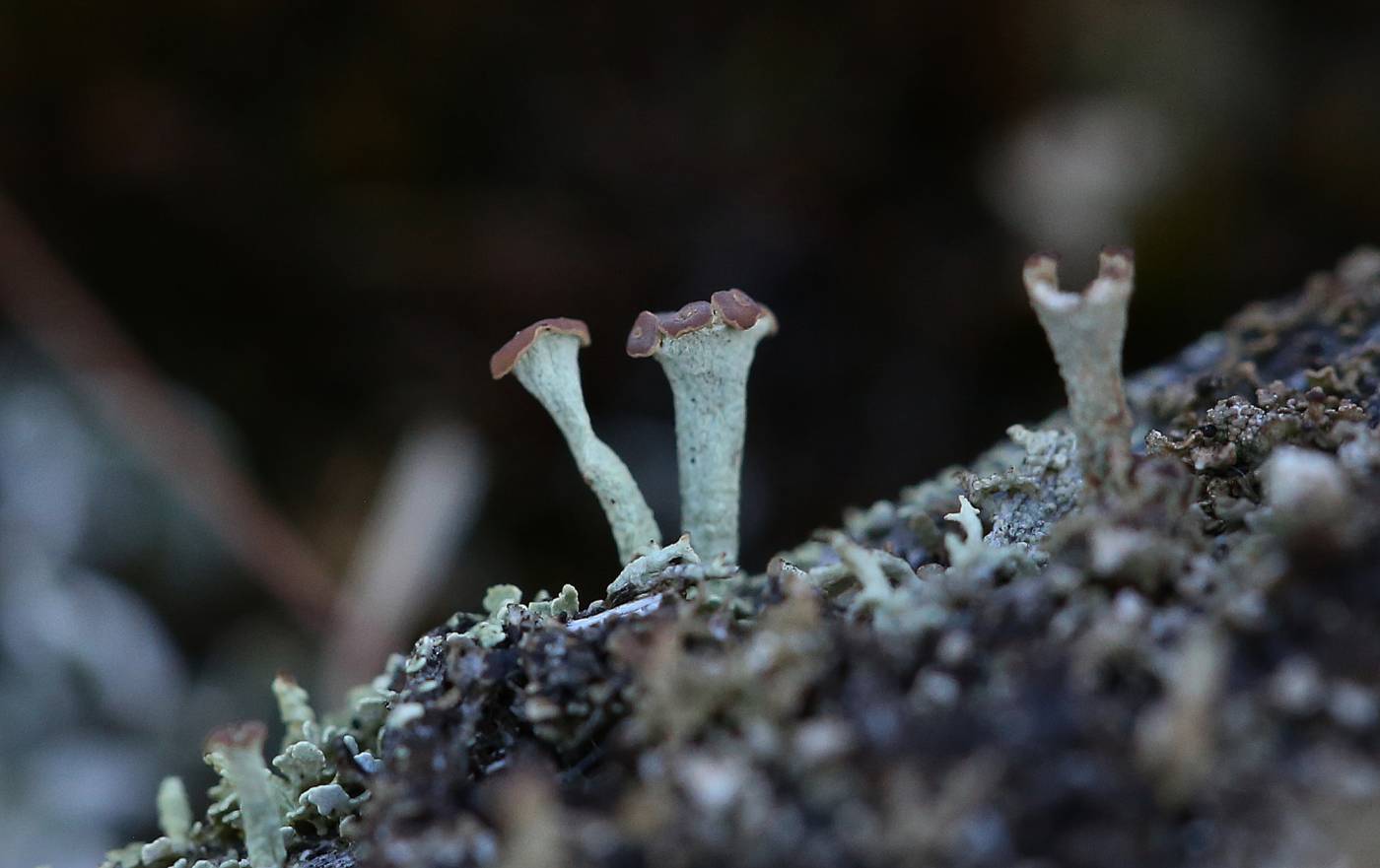A species characterized by corticate non-branched or apically slightly branched podetia with usually composite pale-coloured apothecia (pink-brown when wet, ochraceous to pale brown when dry) on the tops. It grows on slowly decaying coniferous wood, typically on the cut surfaces of stumps or logs but also on old thatchroofs, lying branches or tree bark. Rarely, it may also occur on dying bryophytes and humus (Ahti & Stenroos 2013). Cladonia botrytes is a typical boreal-montane lichen, abundant in northern Europe. In central Europe, it is currently considered rare, mainly growing in high mountains. In the past, the occurrence from our area was reported from middle elevations to mountains, namely from Beskydy Mts, Českomoravská vysočina Highlands, Šumava Mts and Mariánské Lázně. The last record is from 1995 from Spálené luh near Nový Údolí in Šumava (Liška et al. 1998). It has not been found since then, although its presence here is still possible. The species evidently declined and the reasons are not clear but may be linked to, e.g., changes in forest management (Liška et al. 1998).
Literature: Ahti T. & Stenroos S. (2013): Cladoniaceae. – In: Ahti T., Stenroos S. & Moberg R. [eds], Nordic Lichen Flora 5: 87–89. Liška J., Dětinský R. & Palice Z. (1998): A project on distribution changes of lichens in the Czech Republic. – Sauteria 9: 351–360.
taxonomic classification:Ascomycota → Lecanoromycetes → Lecanorales → Cladoniaceae → Cladonia
Red List (Liška & Palice 2010):CR – critically endangered
Red List (Malíček 2023):A – no recent data
Occurrence in the Czech Republic
All records: 19, confirmed 14. One click on a selected square displays particular record(s), including their source(s).
